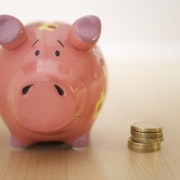Siblings who share business empires
Sibling rivalry in family business is an issue that comes up time and time again (Clash of the offspring, November 21). Often, it causes problems, wrecks succession plans and reinvigorates old tensions. But there are many examples of successful family businesses created by brothers and sisters. Indeed, their strength has come from that sibling connection.
One good example is Scenic World in Katoomba. Established in 1945 by Harry Hammon, it has been operated by three generations of the Hammon family. More than 800,000 people come through there every year, making it the most visited privately owned tourist attraction in Australia. Spending an average of $33.30 each, visitors generate around $25 million in turnover and revenues this year are up 27.5 per cent.
David Hammon and his sister Anthea are joint managing directors. They have complementary skills: David has a background in accounting, Anthea is a mechanical engineer.
Hammon says he and his sister had to put a lot of the sibling rivalry to the side to make it work.
“Anthea and I hadn’t got along very well for a long time," Hammon says. “When we started working together, she didn’t like me much at all and so when we started working together, we had to figure out a way to work together. We had this mutual respect coming from the fact that we were pretty good at what we did. One day we had a pretty honest conversation and I said sorry for teasing her for the better part of 15 years.”
He says the relationship now gives the business a competitive advantage. “We are sometimes referred to as the two-headed monster. It makes it a bit easier because you’re always going in that same sort of direction. You want the whole business to have that unified sense of direction.”
What works in small family businesses works at the bigger end of town; the same approach can yield spectacular results. Some examples:
Rothschild: Coming out of the Frankfurt ghetto, Mayer Amschel Rothschild (1744-1812), entered the banking business by getting his five sons to work together in partnership. In 1798, at the age of 21, Nathan Mayer Rothschild (1777-1836) left Frankfurt in 1798 to set up in England, initially as a textile merchant in Manchester. He then moved to the City of London, where he established a bank which helped finance Britain’s victory at Waterloo. That became the model for his brothers back in Frankfurt. In 1812, James Mayer Rothschild (1792-1868) established a banking house in Paris. Salomon Mayer Rothschild (1774-1855) settled in Vienna in 1820. Carl Mayer Rothschild (1788-1855) opened a bank in Naples, leaving Amschel Mayer (1773-1855), to head the Frankfurt bank. They all worked closely together to build the business that stretches across Europe. The core banking business is today in the hands of the seventh generation of Rothschilds.
Walmart: The Walton family is the richest family in the United States and one of the richest in the world. Heirs to the Walmart fortune and the company’s largest shareholders, they have over fifty percent ownership of the retail giant. Sam Walton and his brother Bud opened the first Walmart store in 1962. Today three family members serve on Walmart’s board of directors: Rob, son of Sam Walton, is the chair, and sits on the board with his brother Jim and his son-in-law Greg Penner.
Koch Industries: David Koch and his brother Charles, own 84 per cent of the $115 billion Koch Industries, America's second largest private company with interests in oil pipelines, refineries, building materials, paper towels. Koch even makes Dixie cups. Koch companies operate in about 60 countries and employ more than 100,000 people worldwide, with about 60,000 of those in the United States. Forbes ranks it as the second-largest private company in the country after Cargill. Massive profits have made David and Charles Koch among the richest men in America. Their combined fortune of $35bn is exceeded only by those of Bill Gates and Warren Buffett. Given the company’s diverse portfolio, it's no surprise that the brothers have spent millions of dollars lobbying the US government this past decade on a range of issues, from defence appropriations, environmental issues to financial regulatory reform. The Kochs are die-hard libertarians who believe in drastically lower personal and corporate taxes and less regulation of industry, especially of environmental matters. They have funded and supported organisations that support Republican candidates. They have reportedly donated more than $196m to dozens of free-market and advocacy organisations.
Westfield: When Westfield founder Frank Lowy moved to a non-executive role in 2011, Peter Lowy and his brother Steven stepped in to run the company, which posted a 4.4 per cent growth in retail sales in the March quarter and took the annual turnover to $20.3bn through a defining restructure with a focus on overseas markets. The Westfield brothers had been working together for years running the business as managing directors. Their brother David, who had worked in the business for years, stepped sideways to focus on LFG Holdings, the company that looks after the Lowy family's private wealth. David still works with his brothers and has a seat on the family board.
Whether it’s smaller family businesses like Australia’s own Scenic World or big corporations like Walmart, the siblings have shown their connection can have a competitive advantage. That overrides any sibling rivalry.
















